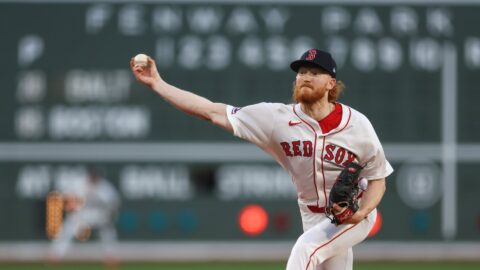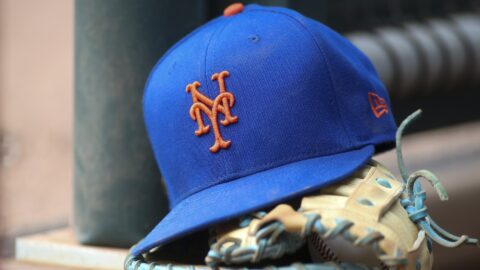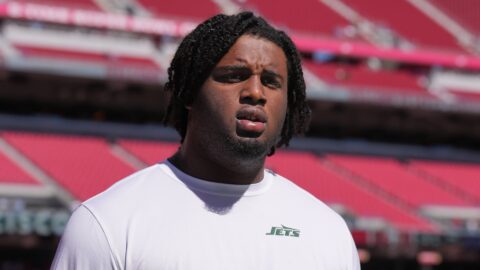FRAMINGHAM, Mass. — The baseball world is still using some dinosaur-like technology that is about a half-century old. L-3 Communications, a company based in Burlington, Mass., has made a product it believes will bring the game into the next generation.
PitchSight is a computer-based system that can track a number of parameters to help a pitcher’s progression, rehabilitation and overall performance. The system, which is comprised of two cameras and a computer program, tracks a pitcher’s release point, pitch speed, arm angle, break of the pitch and location.
“The idea is to give [pitchers and coaches] quantitative measurement they’ve never had,” said L-3 Communications vice president Ken Riddle.
Former Braves and Mets left-hander Tom Glavine has also been on board with the project, offering tips and adjustments to help L-3 Communications complete a product that would ultimately help pitchers at every level of the game. Even the 305-game winner and future Hall of Famer believed it would have helped his game in a variety of areas.
“I grew up in an era when it was more feel, more figuring things out on my own on the mound, figuring things out in conjunction with my pitching coach,” Glavine said from the Doug Carroll Baseball Academy in Framingham, Mass. “[But] it would happen virtually once a year. You’d just get into a rut when you wouldn’t feel right on the mound, things weren’t quite going the way you wanted, but you knew it was a result of something being different on the mound. As much as you tried, you couldn’t quite get your finger on it. [PitchSight] is the kind of thing where you could go, throw a bullpen session, instantly look at it and say, ‘Well, there’s my release point. There’s what the pitches are doing down at this end.’ It’s the kind of thing that you could look at and get an instantaneous feedback on it.”
PitchSight has been recently used at the Carroll Academy and Boston College, and it’s been beta tested throughout minor-league camps, as well. Its official product launch was Wednesday, and each system costs $30,000. Riddle knew it would be difficult to really make an immediate impact on the major circuit, as baseball players, coaches and managers can be pretty traditional with their own methods. Yet Riddle believed the surplus of computerized information will go hand in hand with personalized teaching sessions, and it will eventually be a necessity.
“This is something that will hopefully make their job easier,” Riddle said. “It will give them another tool they can use to communicate with pitchers. It’s going to help them. It will never replace pitching coaches.
“I think five years from now, they’re going to look and say, ‘Geez, I can’t believe we haven’t been doing this forever.’”
There are two particular areas in which the system can advance a pitcher’s career. In terms of performance progression, the computerized display will detail a pitcher’s arm angle and release point. For example, if a pitcher’s delivery is overly dissimilar when he’s throwing a fastball and a slider, he can work on the delivery to add more deception and avoid telegraphing the coming pitch.
It can also track the break and location of the pitch. Younger pitchers might be flying through the minor leagues because they’ve got two dominant pitches, and that could lead to an inflated sense of confidence. But if the computer shows them their curveball is always catching too much of the plate — despite how many called third strikes they record — it can reinforce the belief that they’ll get hammered at the major-league level.
Since the computer is an objective source of information, it could help a pitching coach relay this material to a kid who might think he is above coaching. Of course, that might be a cynical way to look at it, but it’s something that definitely happens in the game.
“You can tell these young kids, ‘Look, that pitch that you’re throwing right there is not a good pitch,’ and they’re going to say, ‘Well, I threw it by the hitter. He swung and missed,’” Glavine said. “They’re not getting the results that correspond with the feedback you’re giving them, so there might be times when it’s hard for them to process that. But if you’re able to say to them, ‘Here is the strike zone, and yes, you’re throwing the ball and guys are swinging and missing. But all these pitches that are in the middle of the strike zone that guys are swinging at and missing. As you move up the ladder, you’re going to start getting killed by those pitches. That pitch needs to go from here to here. That breaking ball — instead of going this way, it needs to go more this way.’ And that’s all stuff you can show them and say, ‘This is what I’m talking about.’ Rather than being in a position where you’re talking at them, now you’ve got some definitive data to say, ‘Here is the end result of what I’m talking about.’”
The second advantage has to do with injury prevention and rehabilitation. If a pitcher is meticulously monitored — the system can be installed anywhere, such as major-league stadiums, batting cages or small parks — the computer can detect a slip in mechanics. That could either be a result of overcompensating for a tweak in the arm, or it could detect a bad habit that could eventually lead to injury-prone release points.
The same can be true for rehabilitation. Take Daisuke Matsuzaka for example. If the Red Sox were using this system to monitor him during his 18-win campaign in 2008, they would know exactly how his arm looked at its best. As he recovers from a back injury this season, the Red Sox can compare his current delivery to that of the one in 2008. Matsuzaka might be able to convince the Sox he feels fine — and the naked eye might even agree with him — but the PitchSight system could still show a slip in mechanics.
“Those are all things that,” Glavine said, “if I had that as a young pitcher, I’m not saying I’d be any better, but the learning curve would have been much quicker than it was.”



